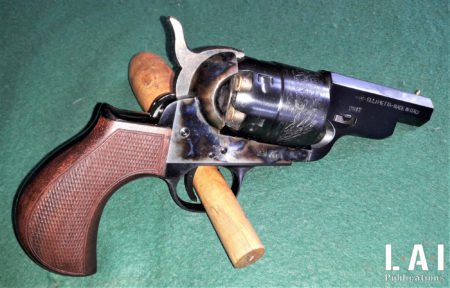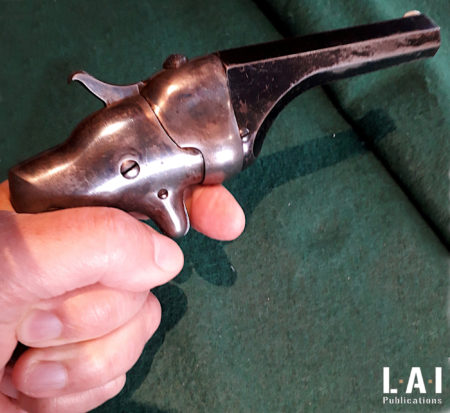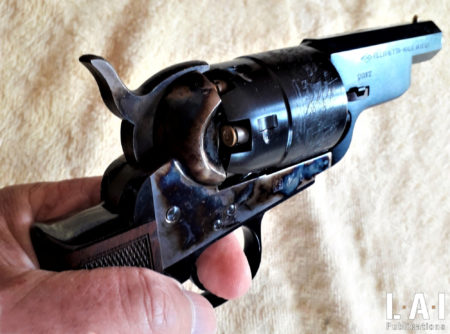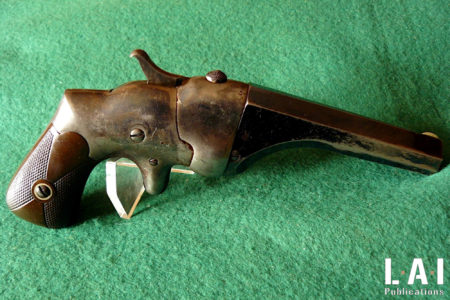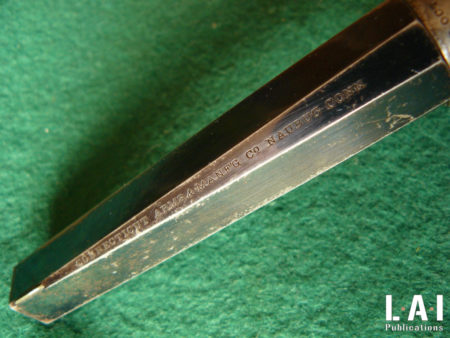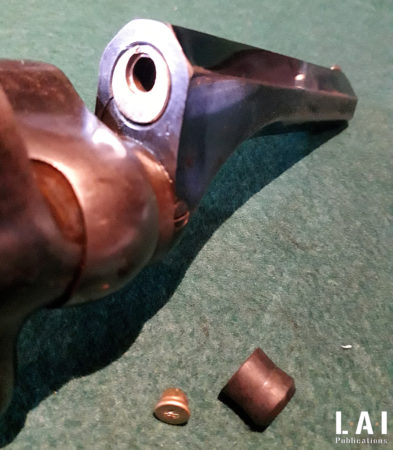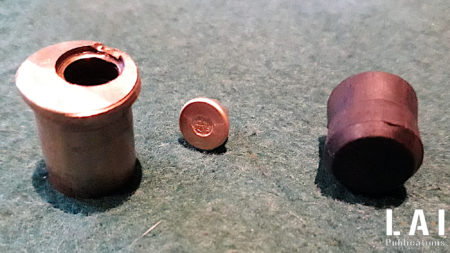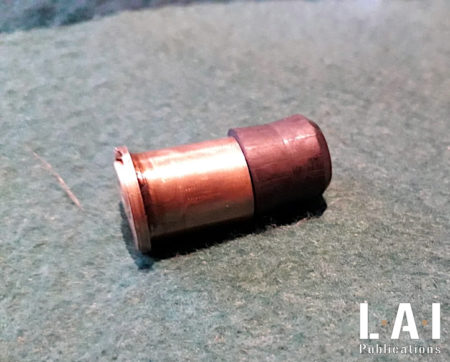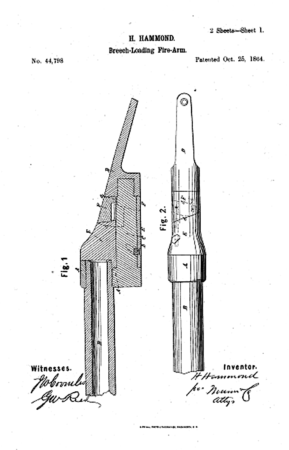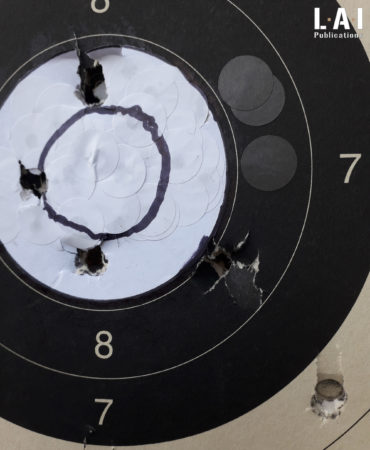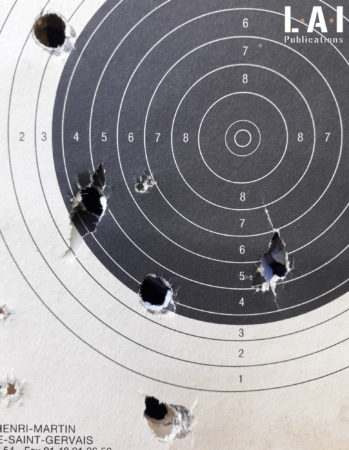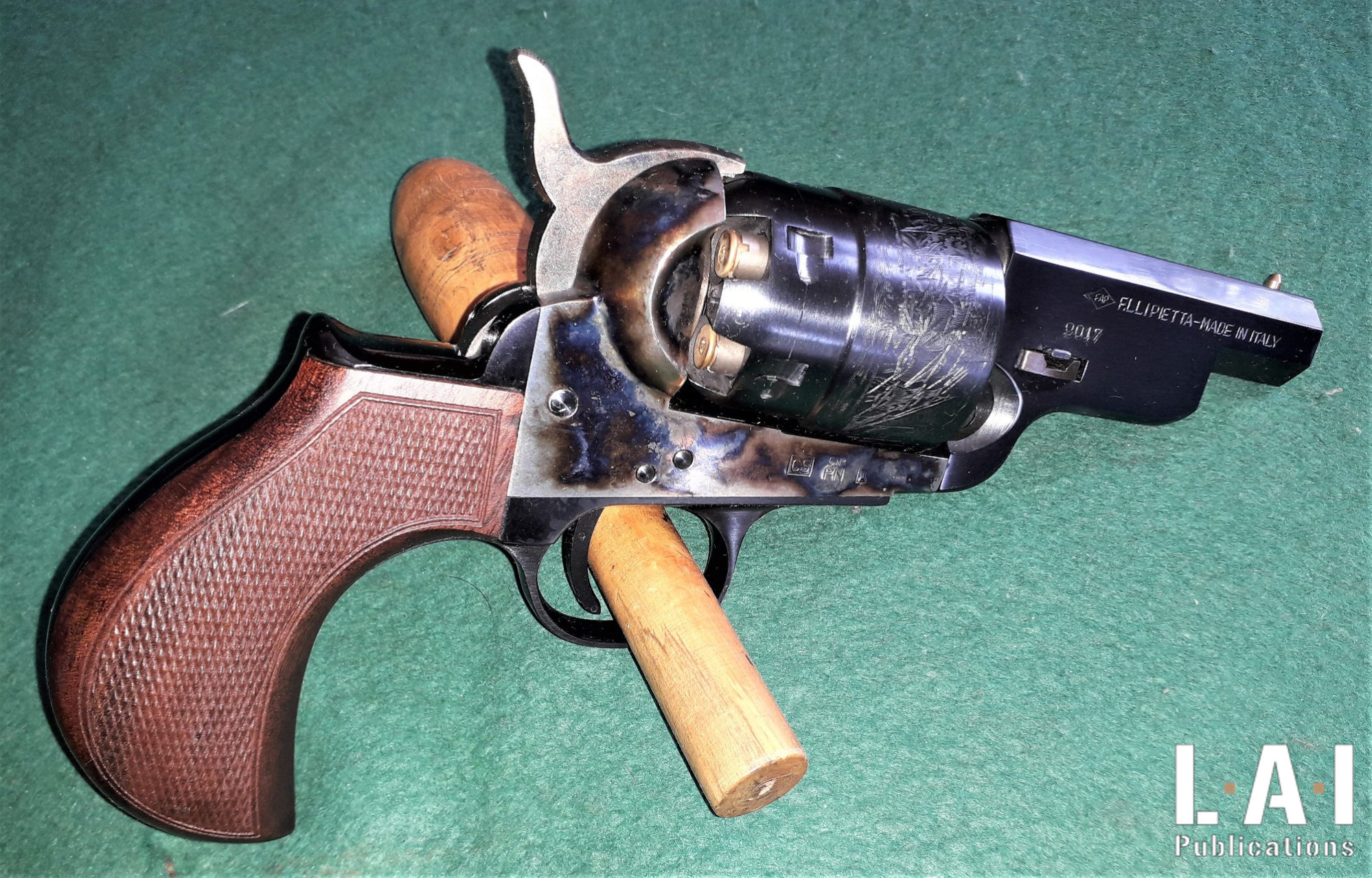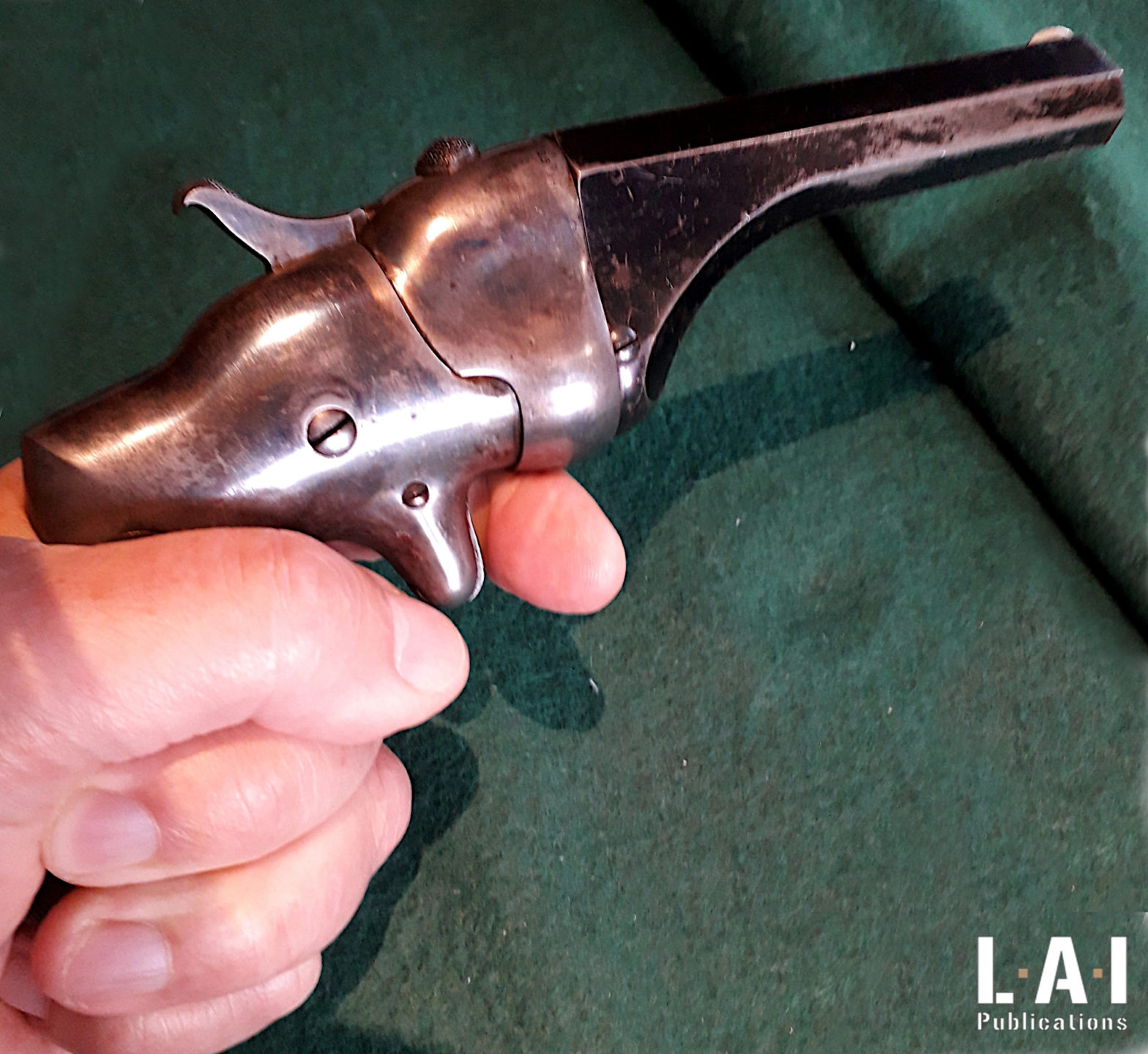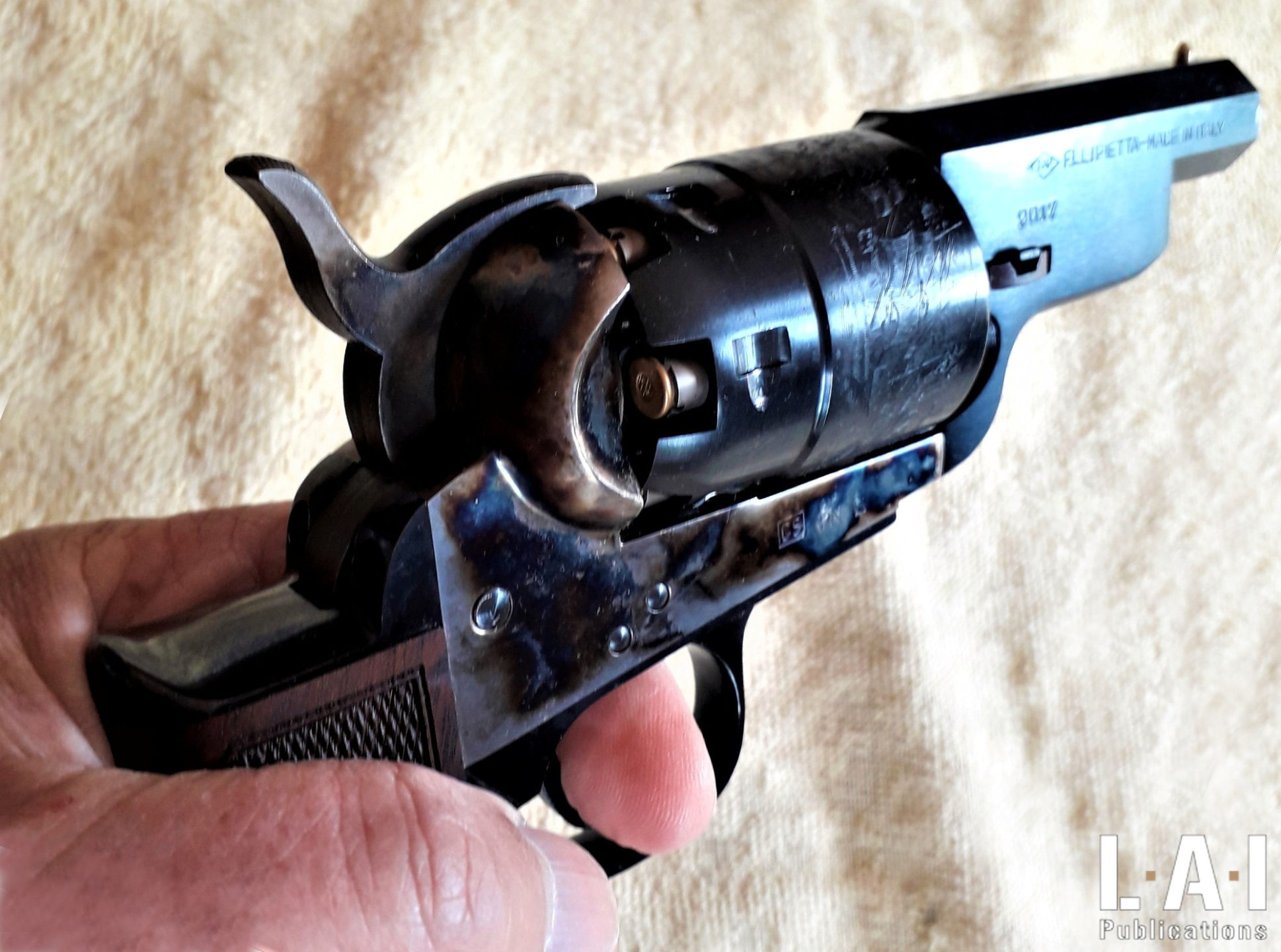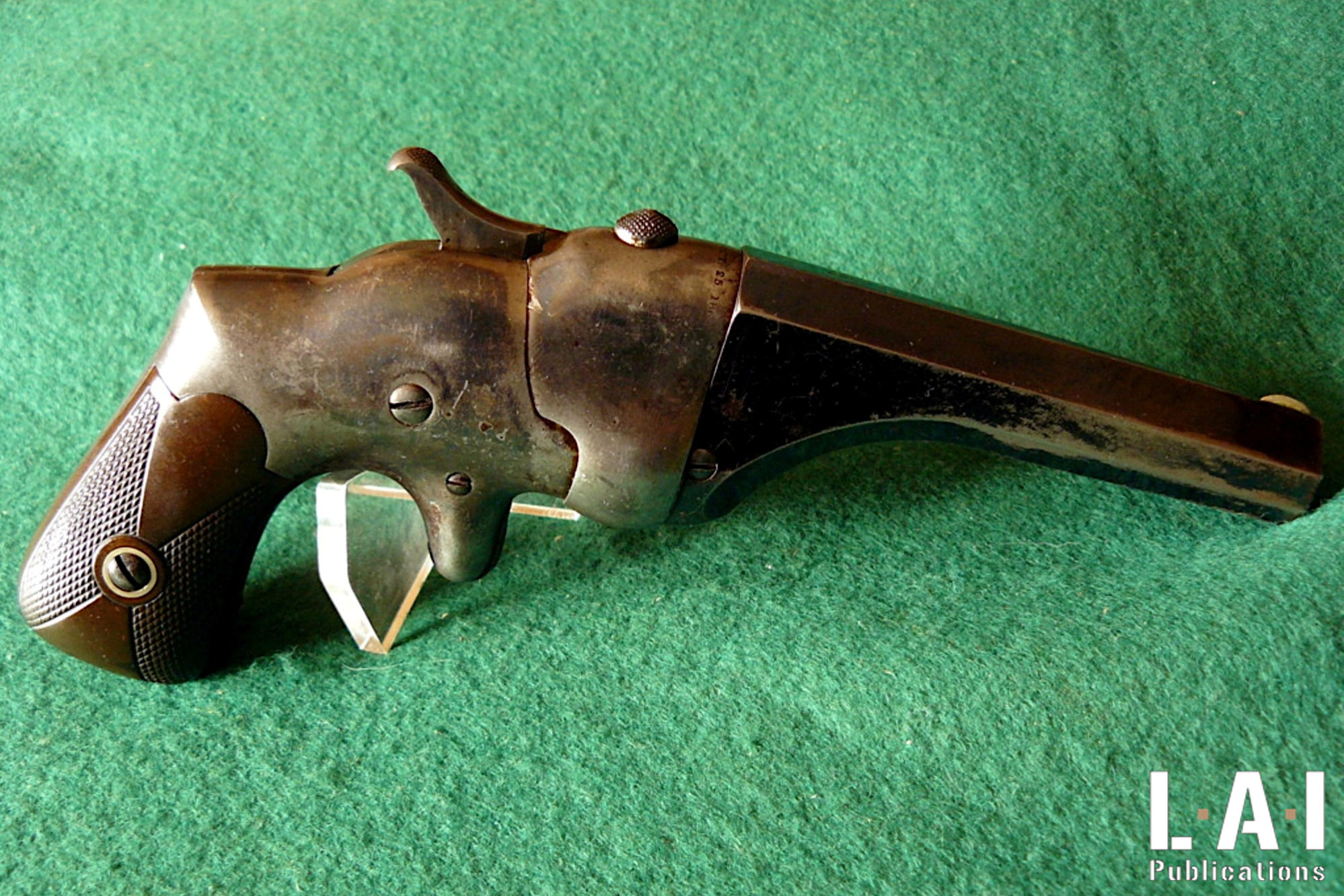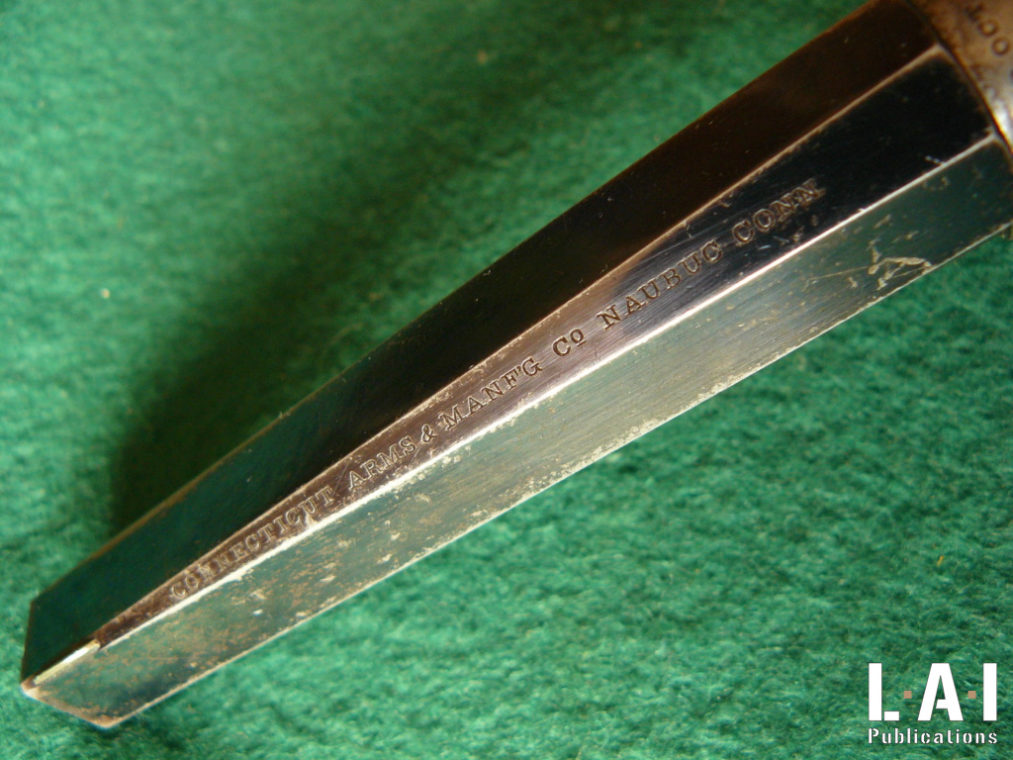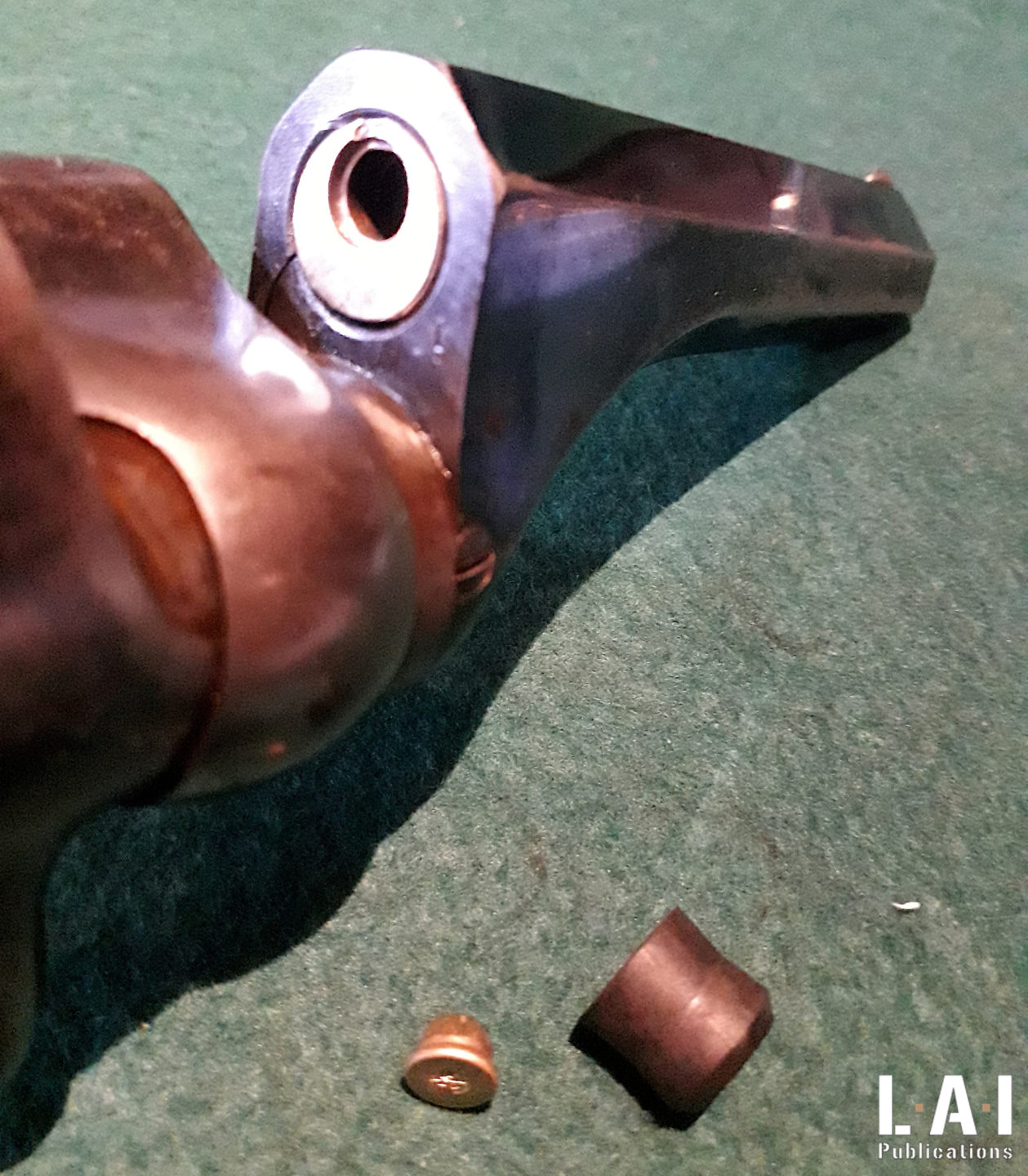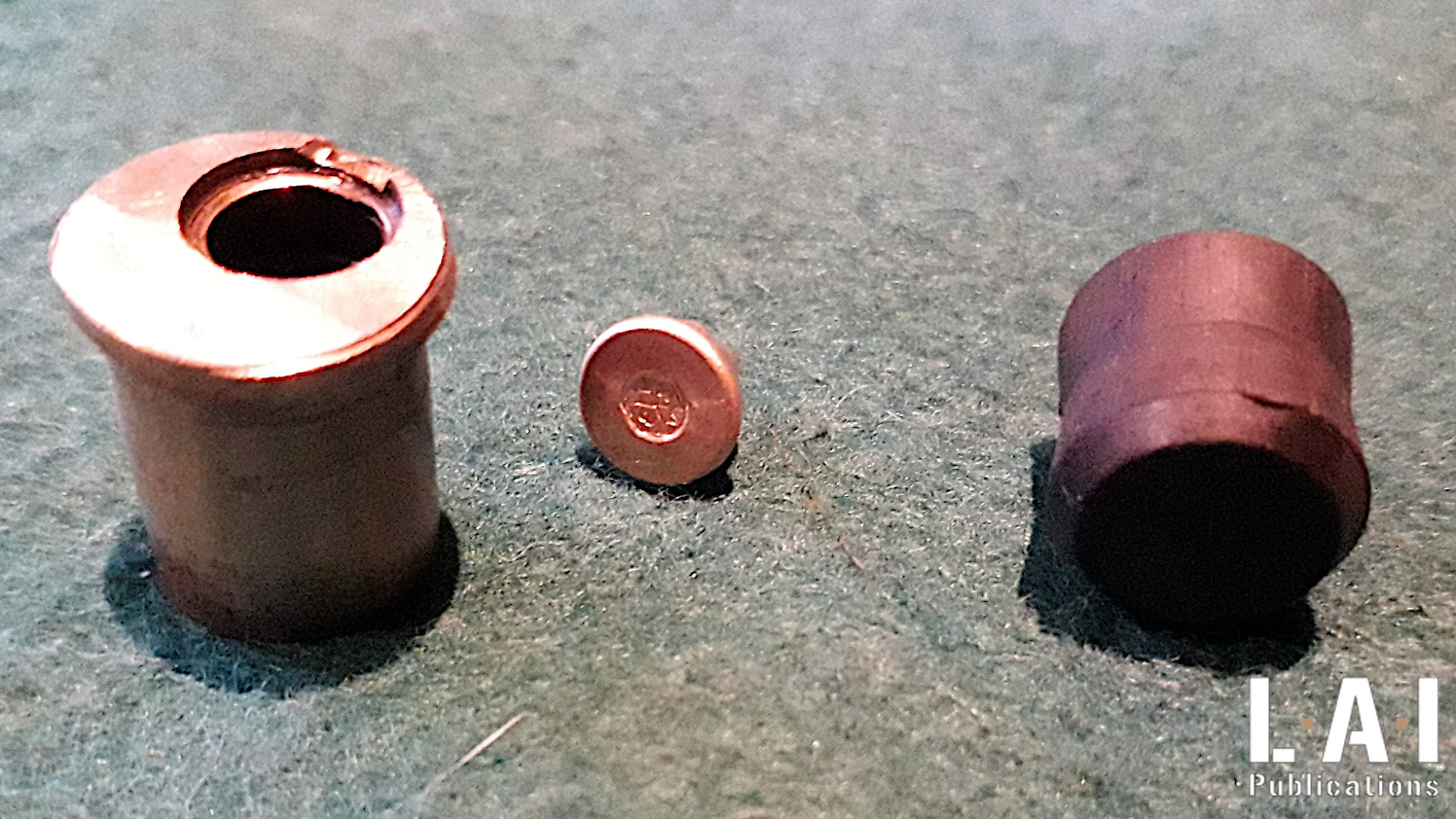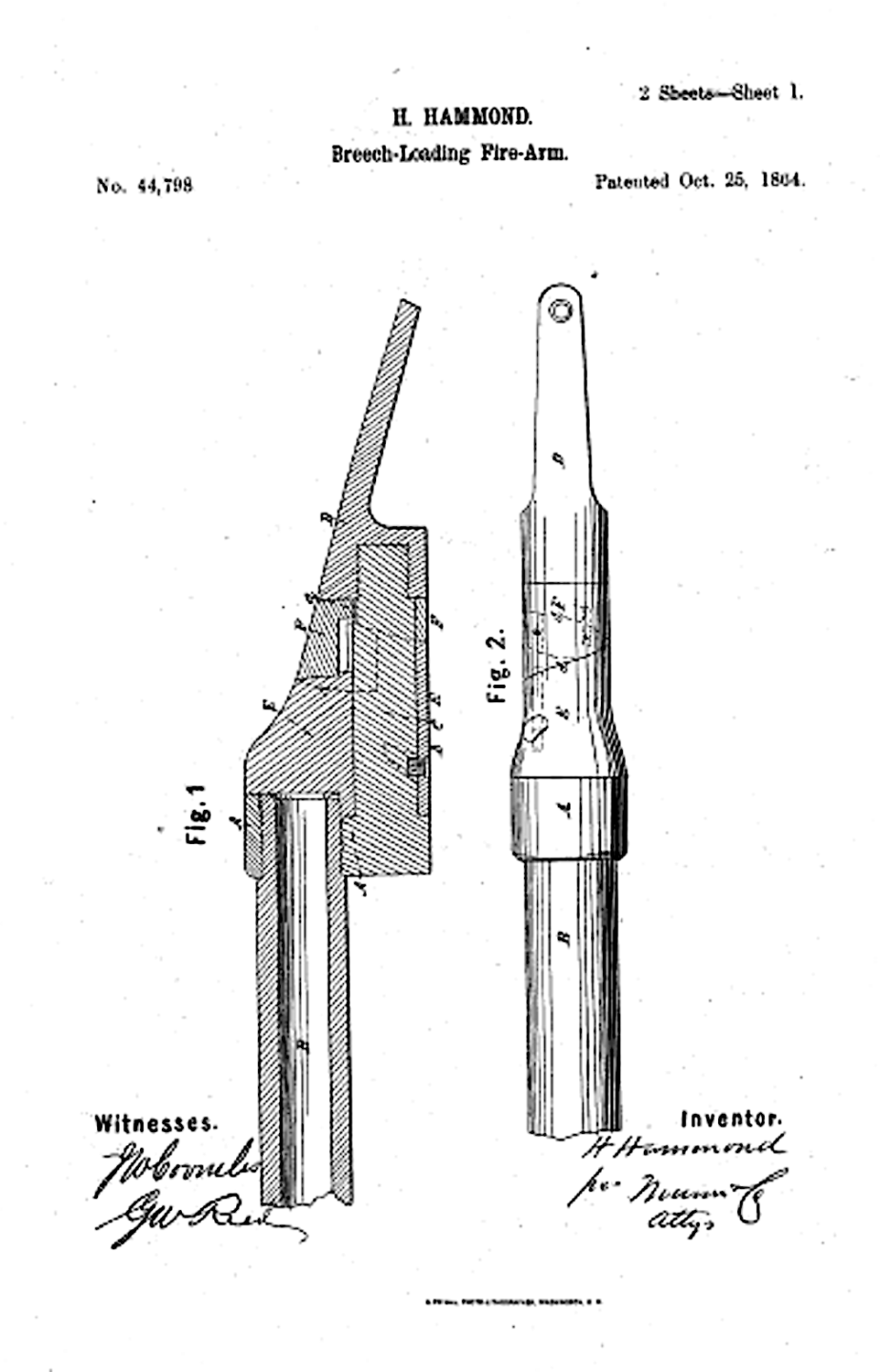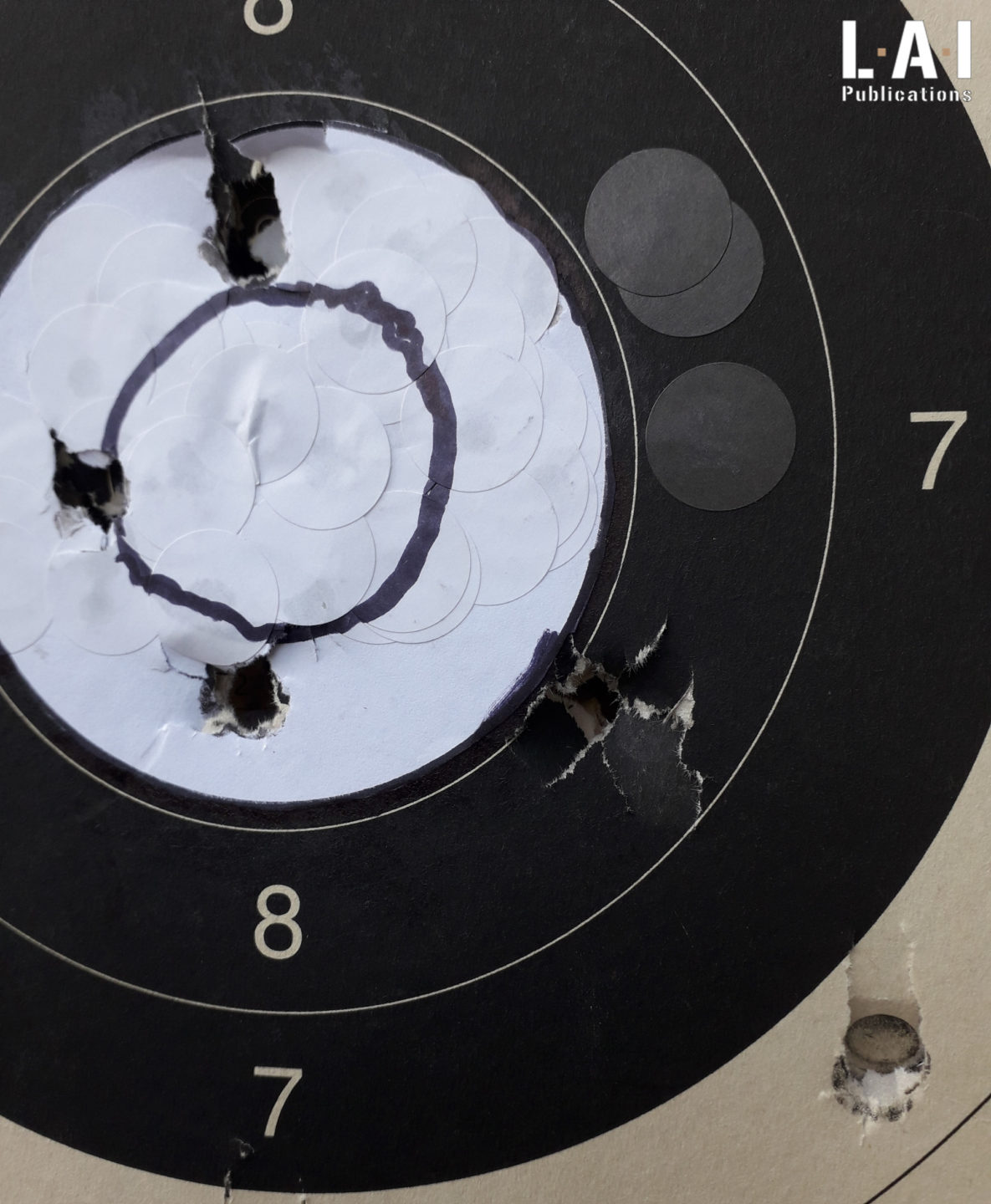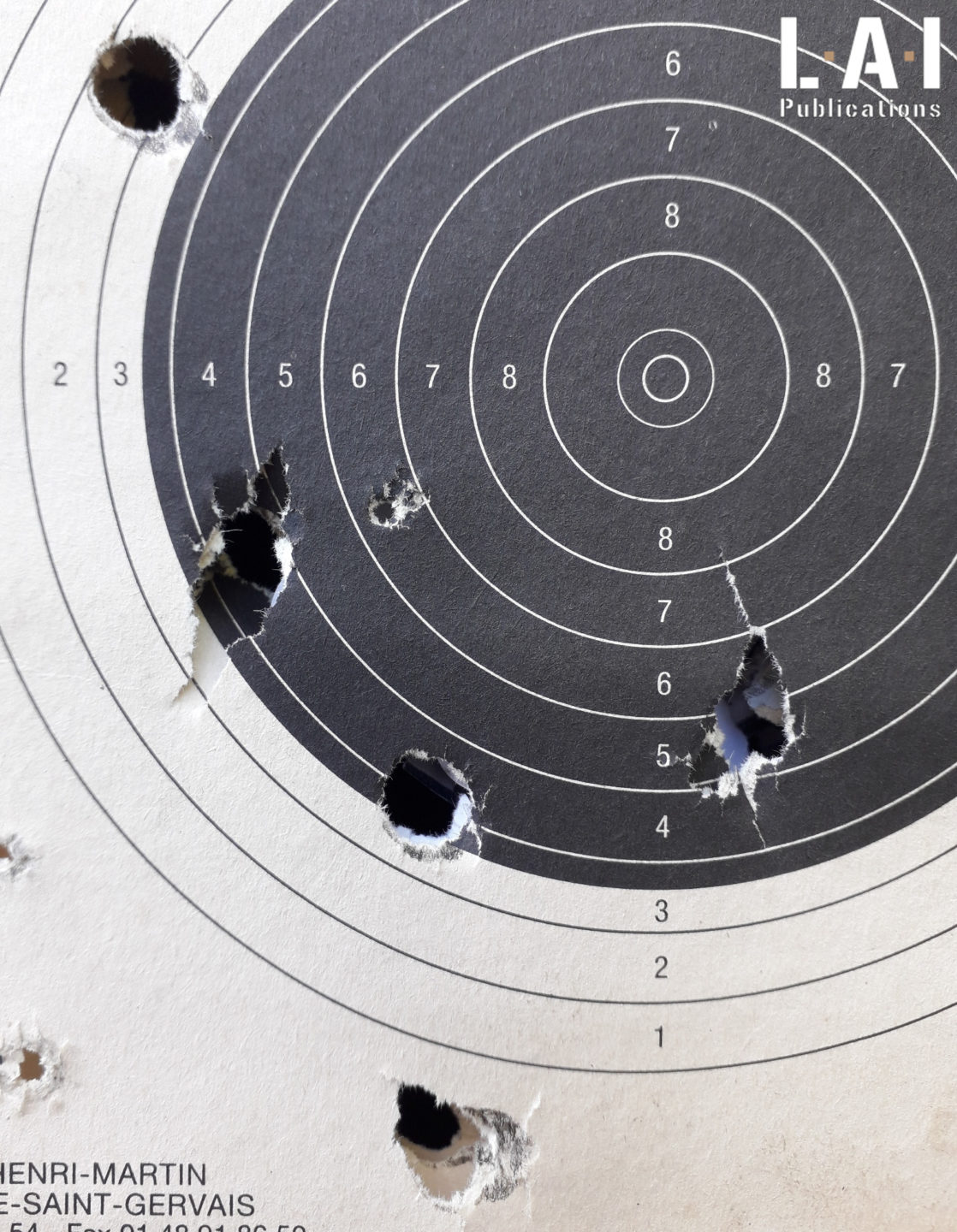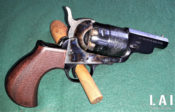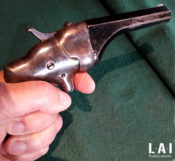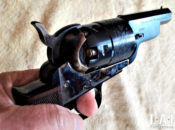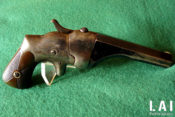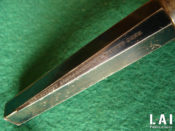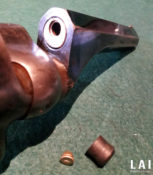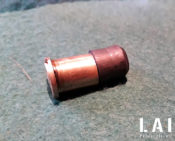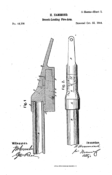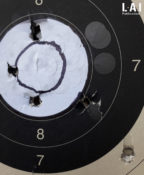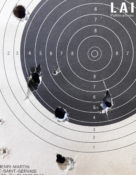Back to the future: Pietta Snubnose versus Hammond Bulldog!

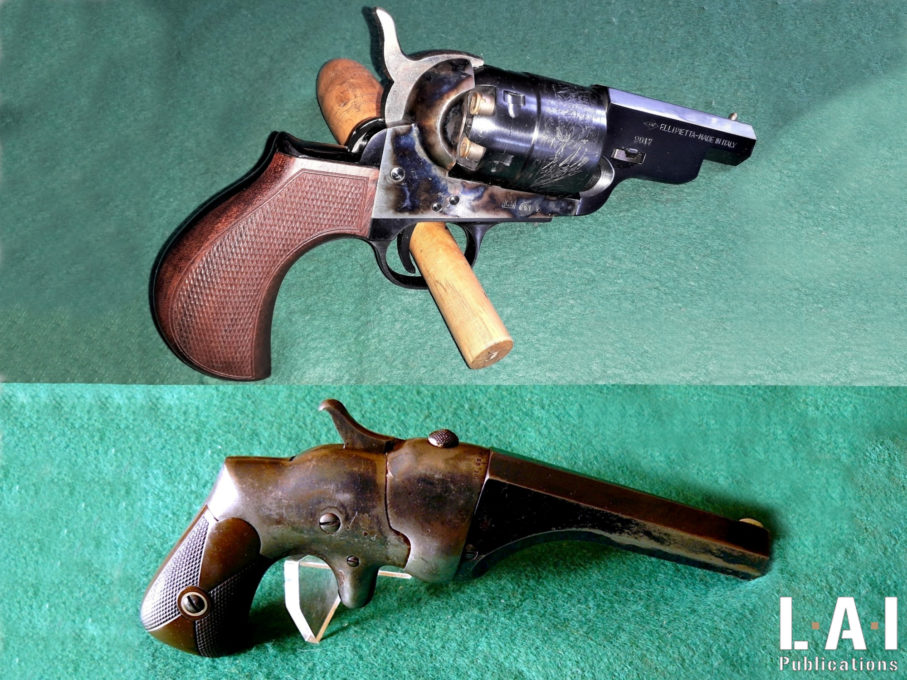
While parking my DeLorean on the other day, I noticed on the passenger’s seat an extraordinary Derringer, probably fallen from a fatal beauty of the West’s purse!
Without really thinking about it I picked up the object which immediately seemed to me of a respectable weight. The following night was filled with strange dreams, and in the early morning I had an idea of an unlikely duel:
I own a Colt 1851 reviewed and corrected by Pietta who made it in a kind of huge Back Up with its compact bird’s head grip and its surprising 3-inch barrel. As I frequently use this big toy to shoot with at home using the friendly H&C training kits, why not confront it with this Derringer Hammond Bulldog, relic of another era but with an otherwise less recreational vocation? The caliber of these two weapons is the same, it is indeed the powerful .44, but if one is a “Cap & Ball”, the other is with rimfire metal cartridge, the famous .44 Henry of the first Winchester.
The Hammond Bulldog
Let’s discover right away this Hammond Bulldog fallen from the sky; what immediately catches the eye is its very large size: 20 cm long, it’s huge for a Derringer! The second highlight is the very particular line, all in roundness which really look like a pebble. Then, as soon as one takes it in hand, it is the weight that strikes: nothing less than 700 grams, which is respectable; and not only the weight, the caliber too: .44 (11.17 mm) with a long chamber to accommodate the .44 Henry. This is a single-shot weapon… I would almost be tempted to say two, so striking is the blunt aspect of the object, if you mind my saying so…
During the first manipulations, the weapon system is also exceptional: to open it, simply press the rear sight and then turn the breech to the left, it will then simultaneously retreat enough to let the extractor operate. The axis of rotation of this breech is also huge and constitutes the support of the barrel which begins in the shape of a console to end with a polygonal profile at the muzzle, surmounted by a thin brass front sight blade. The rigidity of the whole is flawless and the finesse of the sights can give hope for a certain accuracy; we will soon see what happens. Cocking is carried out in the simplest way by pulling the hammer to the second notch with the thumb and firing is ensured by a spur trigger with a very reduced stroke and whose weight is very reasonable. The quality of the set and the bluingSurface finishing of steel giving a black (sometimes bluish)... More (for the barrel, the frame and the breech are case-hardened) is really exceptional, as well as the quality of the markings encountered on the weapon and which I present here too. Finally, the barrel bears large rifling with a very slow twist-rate that the passing of time had the good taste to keep intact. The serial number is strongly but discreetly affixed to the bottom of the frame, under the left grip (in gutta percha) which itself bears this number.
This small presentation of the object already allows the reader to get an idea of the weapon, but, what about its history? Here is what I was able to learn through the web and literature, trying as usual to sort the wheat from the chaff: the Hammond brothers (Henry and Lewis) filed a first patent in the middle of the Civil War (1863) for a rotary breech carbine chambering the .44 Rimfire (RF) cartridge… but the end of the conflict caused the project to be discarded. In 1865 and after having created the “Connecticut Arms & Manufacturing Co” in Naubuc (near Hartford) they were finally able to market their “Bulldog” based on this USPTO patent No. 44798 (Pic. 9); the marking of the weapon indicates the date: October 25th, 1864. This unique model was available in several finishes, including a nickel-plated one, and it seems several calibers: from .41 to .50 Rimfire. However, to this day I have only encountered weapons in .44 RF with a blued barrel and a case-hardened frame, like the sample that illustrates this article. Production reached 7400 copies according to the sources consulted and seems to have ended around 1868 or 1880 following financial difficulties. Finally, for the record, American legend has it that this weapon was carried by Wild Bill Hickok and especially by Mary Katherine Horony, mistress of Doc Holliday… quite the dream don’t you agree?!
The Pietta Snubnose and the H&C training kit
Now let’s move on to the other protagonist of this funny duel: Pietta’s old-west weapons production has already been known for a long time. Its most famous showpiece is the Colt 1851 of which I will not even start to sketch the history as it is well-known. The Italian firm began this journey around 1964 through a traditional manufacture with machines often capable of the best, sometimes the not so good. However, in recent years the Pietta brothers have moved into the digital age and their production, while remaining at a low price, has moved to the quality of the best in the competition, or sometimes even better!
For my part, I have always liked these replicas, quickly resold because I did not use them: the vagaries of the gunpowder and the cap, as well as the cleaning that follows have always discouraged me… Until the day I had the chance to discover the remarkable kits for non-lethal ammunition of the friendly firm H&C well known to French collectors. So, I bought a first kit… then two, then three, and now I own no less than six of them! So, I bought revolvers and rediscovered the pleasure of recreational shooting with the revolver and at home! Much like many people, I have some revolvers that are exact copies of the old Colts, but I blame them a little for their important dimension; also, when Pietta released it 1851 Snubnose in .44 caliber, I quickly gave in and bought one despite its not strictly historical character! Its magnificent bird’s head grip, finely gridded is indeed of major appeal as it is similar to that of the no less famous Colt Lightning! Think about it, I finally have a compact revolver, with a grip that handles smoothly, and thanks to the H&C training kits, easy to use and quickly reloaded, especially since I have several cylinders that allow me to shoot 24 shots relatively quickly, without fearing hang fire or jamming!
For the record, the principle of these kits is as follows: six nipples are drilled in such a way they can receive small blank cartridges of .22. These blank cartridges then operate as a thruster for soft plastic diabolos of caliber .38 (usually called .36 in the case of American “Cap & Ball” revolvers) or .44. The projectiles are extremely light (about 1 gram in .44), reusable almost indefinitely, and finally easy to stop with a bullet trap made of cardboard and plastic. Finally, the precision is astounding and with a standard gun it is easy to group into the black area of a 50 pistol target up to twenty meters, on windless days!
The duel
So, the moment of truth is now at hand: what precision to expect from this large revolver as short as it is heavy (barely 21 cm long for a weight of 950 grams) with a line of sight composed only of a notch in the nose of the hammer and a tiny cylindrical brass front sight blade? I publish here a rather telling target, hit at 15 meters, the irregular holes reflect only the low speed of the bullet. (Note: it is more important with a long barrel, especially in caliber .36: the cutting of the cardboard becomes as frank as with a Wad Cutter). If you now compare the two weapons side by side, you can understand how the idea of this face-to-face could have bloomed in my mind!
It is now a question of having the Hammond face the targets, but before that, a little imagination and a little work are required! Indeed, let us remember that this weapon, if it is in caliber .44 (that of the H&C diabolos), is also a rimfire cartridge … So, I simply remembered the productions of this company allowing to use the small cartridges of .22 inserted on the periphery of some obsolete calibers such as the .32 RF for example. A few measurements, a piece of brass and a lathe operator friend would make it possible to revive our Derringer without problem: see Pic. 6 of the set of case and ball posed as they appear in the chamber. The loading procedure is therefore very simple: open the breech, push a diabolo into the chamber with your finger, insert the “brass case” behind with its small milling in front of the striker, put the blank cartridge of .22 in its housing, close the breech … you only have to cock the hammer in front of the targets! Note: to reload the weapon just open the breech and the extractor does its job…
After mastering the relatively hard trigger weight (we even may say it acts as a safety) the results are coming in quick… and they are very positive because the line of sight is quite long, as well as the barrel. In addition, as there is no cylinder gapIn a revolver, small clearance between the barrel and the cy... More as on a revolver, the speeds obtained are higher, another guarantee of accuracy. Here is the Pic. 10 of what can be obtained with this historic weapon (note that I did this test at the maximum distance allowed by my yard and one-handed: 23 meters!).
In conclusion
As a conclusion to this confrontation, I will remember the power and extraordinary accuracy of the Hammond Bulldog: if you think you have only one round to shoot, this is the weapon you have to choose! The replica of the Colt revisited by Pietta and H&C offers for its part an extraordinary enjoyable recreational aspect, coupled with a reliability that the originals probably did not have because of their capricious caps … That’s it, I hope this little unpretentious adventure has entertained you… if so, I promise, I’ll take the DeLorean out of the garage to get you yet another authentic weapons!
Marc Barret
Note: This article is also available (in French only) on the UFA website: https://www.armes-ufa.com/
This is free access work: the only way to support us is to share this content and subscribe. In addition to a full access to our production, subscription is a wonderful way to support our approach, from enthusiasts to enthusiasts!
Sources and acknowledgements:
- Internet and Wikipedia
- USPTO for patent
- H&C: https://www.hc-collection.com/
- My friend Gilles for the tour work and advice.


